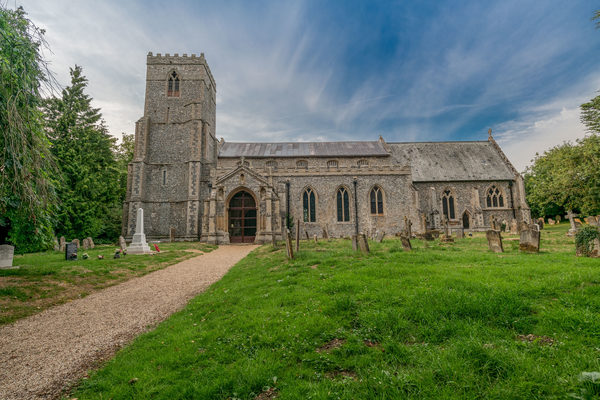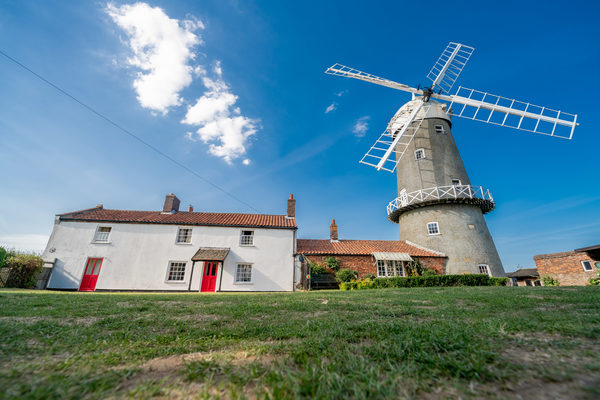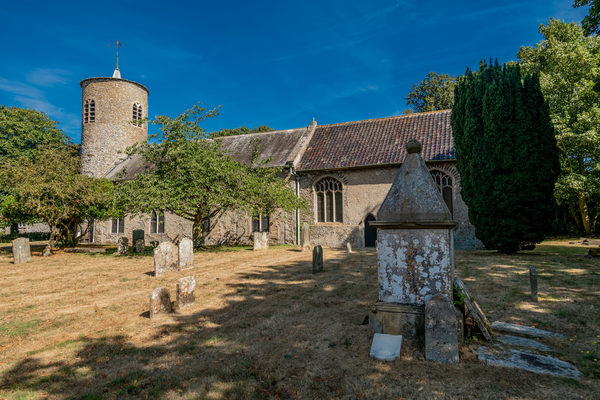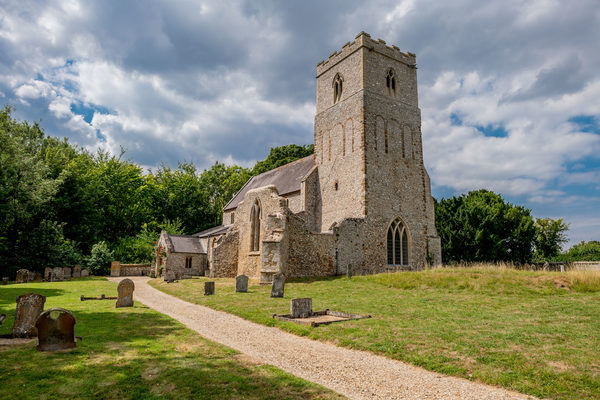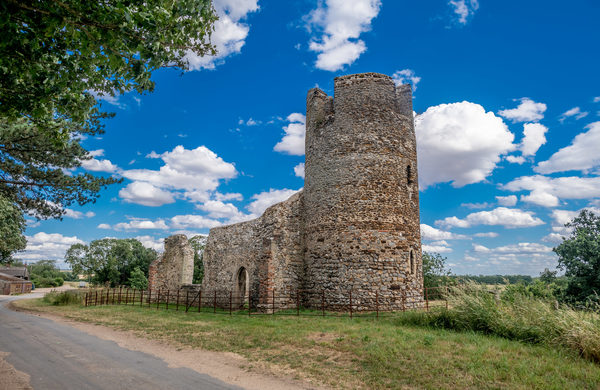In the grounds of Houghton Hall, ancestral home of the Walpole family, stands the medieval church of St Martin. The Walpole's lived at Houghton from the 11th century until the 18th century, and counted among their numbers Sir Robert Walpole, the first official prime Minister of England. Sir Robert is buried at the east end of St Martin's church, near the high altar. He was partly responsible for restoring the medieval church and he built the striking Gothick west tower in 1726 as a memorial to his grandfather Sir Jeffery Burwell.
The church was restored at the same time that the entire village of Houghton was torn down and rebuilt as estate cottages outside the Hall grounds.
In the tower is a single bell, cast in 1426 and inscribed with the Latin phrase 'S Petre, ora pro nobis', translates as 'St Peter, pray for me'.
In the church through the west tower door the first thing you see is the elegant 18th century font. Near the font is an Easter Candle designed by Sir Charles Nicholson in 1926.
The nave arcades date to the late 13th century. The north aisle is original medieval construction, but the windows were inserted in the 1726 rebuilding. The south aisle dates to the early 16th century. The flat-topped windows are characteristic of the Tudor period and contrast with the rounded 18th century windows in the north aisle.
In the centre of the nave aisle is interesting historic feature in the church, a carved effigy of a Prior of Coxford Priory, who died in 1307. The effigy was brought to Houghton church in 1522, well before the Dissolution of the Monasteries. It shows the deceased wearing his vestments for the celebration of the Eucharist.
The church has a silver chalice used at the Eucharist that was given by Sir Robert Walpole's father in the late 17th century. It is still used, though not kept in the church for security reasons.
Most of the nave pews are 18th century, with a few earlier examples. Many have odd carvings on the bench ends and arm rests, including several grotesque figures. The blue and gold altar cloth comes was made for the coronation of George VI in 1937. On the walls are funeral hatchments to generations of the Walpole family.
